Learning Spaces Beyond the Classroom
November 7, 2018 - 5 minutes readHallways serve a purpose. Typically they provide a means for people to move from one office to another or from one classroom to the next. When I visualize the hallways of my own secondary school, my mind immediately flashes back to a lengthy passageway flanked by lockers. At Rockridge, we are fortunate that our building is atypical of a traditional brick and mortar school. Tucked into a natural greenspace, the school blends in nicely with its surrounding environment. Visitors have likened our school to a chalet, with the interior mirroring that feeling of coziness and comfort often associated with a mountain lodge. The hallways vary in length and width throughout Rockridge and you never feel like you are moving through a long tunnel.
Former Principal Jeannette Laursoo and Vice-Principal Chris Sandor worked with Director of Facilities, Wade Hickey last year to identify ways that Rockridge’s hallway spaces could be redesigned to better serve students. Could functional, purposeful learning spaces be created that would allow students to work collaboratively or independently? Over the summer our talented and innovative carpenter, Greg MacDougall, brought their visions to life. He designed and created broad counters and installed electrical outlets, creating six workstations that encircle the second floor of the west wing, looking much like what you’d see in the window of a coffee shop. 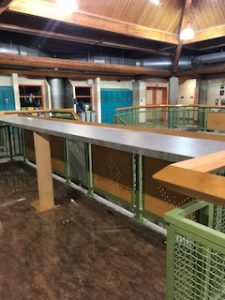
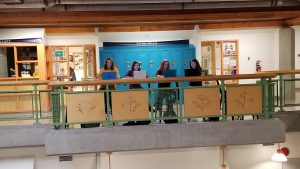
When the students returned to school in September, we were curious to see how, if and when students would use these spaces. Would the spaces be used for collaboration, or would students work quietly on their own? Would the spaces be used for school work, or perhaps solely for socializing? Would they even be used at all? After observing for a few weeks, we got the answers we had hoped for, and couldn’t have been more pleased. Students were using these spaces productively in ways that suited their needs at all times throughout the day without disruption to surrounding classrooms. 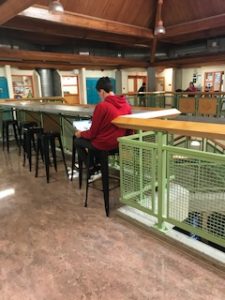
Although spaces in our redesigned Learning Commons are being used for multiple purposes, at times our teacher-librarians found that there were not enough areas for students to collaborate. Working with Wade and Greg, two additional collaborative spaces were constructed across from the entrance to the Learning Commons, in a wider area of the hallway. Rather than enclosed spaces, these two areas are separated with partitions. Rarely do I walk by these spaces and find that they are not being used. Students are hovered together working on projects, often using the whiteboards to document their thinking or simply using the time and space to work on assignments. 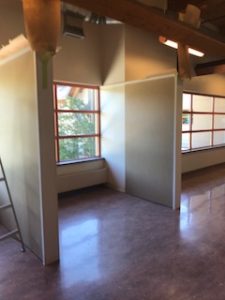
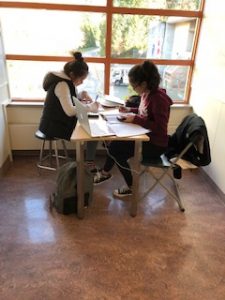
Given the tremendous success and positive impact that the redesigned learning spaces are having on student learning in our west hall, it was time to re-visit how similar areas could be utilized in the east hall area. Who better to ask than those using, or in this case, perhaps not using, these spaces – the students. Of the four areas in the east wing, two have benches as pictured in the photo below. At times I may see one or two students sitting on these benches eating lunch or chatting, but rarely for any other purpose. The areas lack interest and are not inviting. When student feedback was sought, they said they would like these areas to offer some kind of low seating with tables that could be used for personal items. In summary, students shared that they would love to have comfortable areas for collaborative purposes. Currently, we are developing the plans for this next phase, and we are excited as we anticipate seeing our students’ ideas come to fruition.
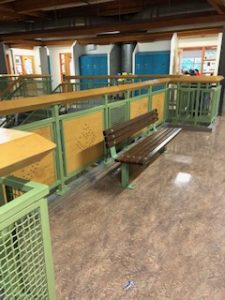
Learning is no longer restricted to inside classroom walls. Our hallways are no longer merely people movers. As we noticed, these learning spaces foster student choice, collaboration and creativity simply by the way they were designed. Students are drawn to these spaces. Providing useful spaces in hallways and other common areas to meet students’ needs has not only improved our physical environment but has enhanced students’ feeling of ownership in their school community.
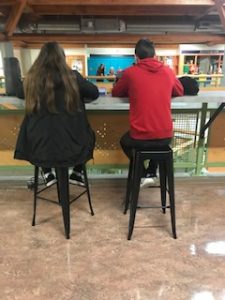
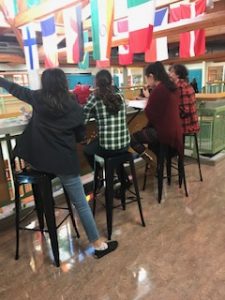
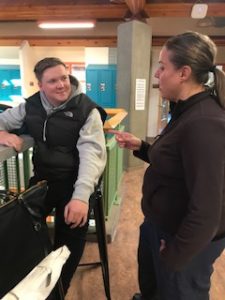
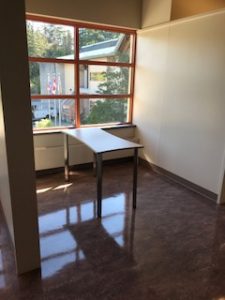
Recent Comments